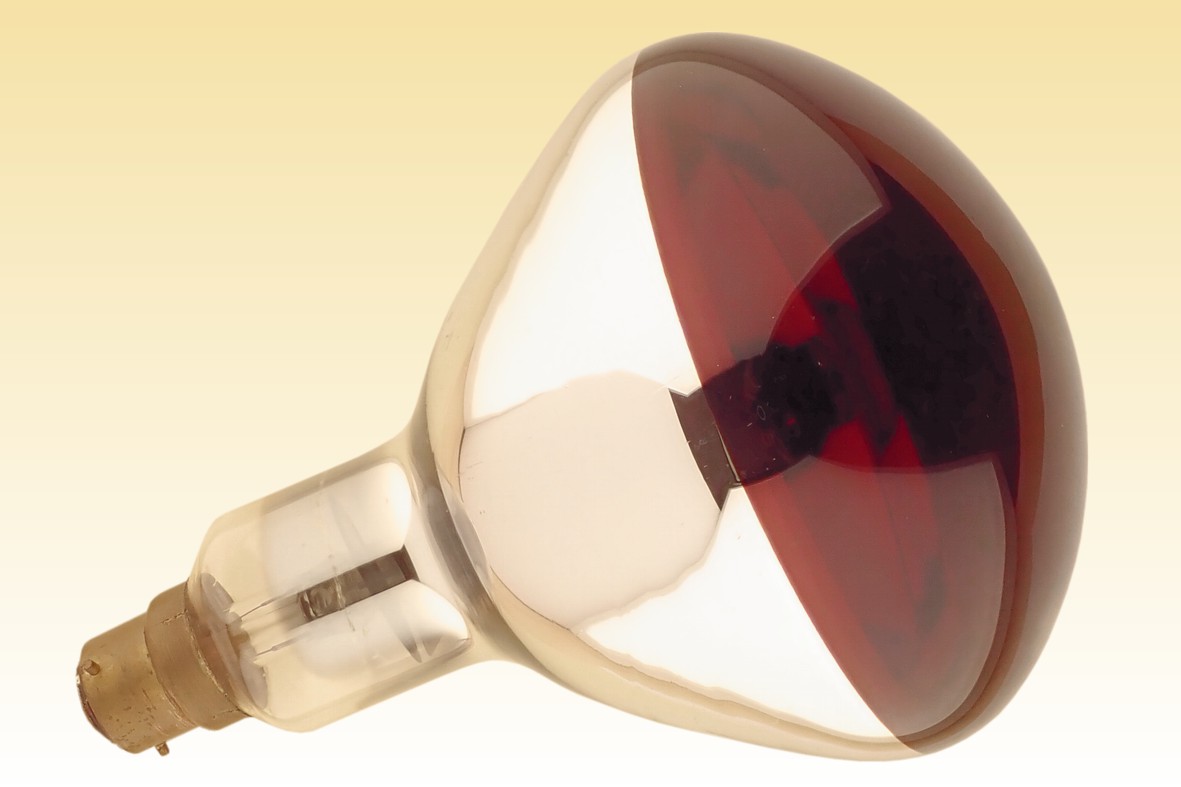
|
Philips Infraphil Blown Reflector 13373F/479 |

For IR therapy it is desirable to maximise the penetration of heat deep into the muscle, but this is limited by the onset of pain when skin temperatures exceed 44°C. This is why the Infraphil lamp was never made in powers exceeding 150W. However thanks to the wavelength shift, Philips was first with a biologically-optimised lamp whose heat was delivered below skin level - allowing an increase in power density without risk of pain, and much more effective treatment.
The first Infraphil was the model 7525 of 1946 with a deep parabolic reflector to produce a much more concentrated beam than other IR lamps. The flat grid filament ensures better beam uniformity than ordinary filament constructions. Within a few years it was replaced by the 7526 ruby stained version, and around 1950 was re-named 13373F/479 as on this lamp. The ruby coating is not only to reduce glare, but has a very important function in blocking wavelengths below 600nm which are absorbed by haemoglobin in the blood, allowing IR levels to be increased without risk of haemolysis. The lamp is equipped with a 3-pin bayonet cap to allow use only in the dedicated Philips Infraphil luminaires. Around 1965 this type was superseded by a lower cost lamp having the more standardised R-125 bulb with flatter front face.




| Manufacturer: | NV Philips Gloeilampenfabrieken | |
| Lamp Power: | 150 Watts | |
| Lamp Voltage: | 210 Volts | |
| Lamp Current: | 0.71 Amperes | |
| Cap Type: | B22d-3/25x26 | Brass + vitrite |
| Bulb Type: | R-125 | R-40 in eighths/inch |
| Bulb Finish: | Ruby stained | Borosilicate glass |
| Filament Type: | C-11 | Horizontal Grid |
| Atmosphere: | 85:15 Argon-Nitrogen | Red P & ZrAl getters |
| Luminous Flux: | 15 lumens | |
| Luminous Efficacy: | 0.1 lm/W | |
| Luminous Intensity: | N/A | |
| Beam Distribution: | Approx 10° | to 50% peak intensity |
| Colour Temperature & CRI: | CCT: 2900K (Filament) | Ra 50 |
| Chromaticity Co-ordinates: | CCx: 0.650 | CCy: 0.330 |
| Lifetime: | 300 hours | |
| Burning Position: | Universal | |
| Overall Length: | 180 mm | 71/32 inches |
| Light Centre Length: | ||
| Factory: | Emmasingel, Eindhoven | Netherlands |
| Date of Manufacture: | 1961 March | |
| Original Value: | ||

